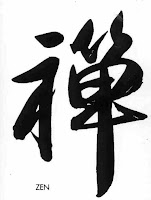 So we're back to talking about Mirror Neurons and their applicability to more effective athletic training. In my last entry on this subject, we looked at the concept and the science behind it, albeit in layman's terms. If you buy into the science and the experiences of those who've benefitted from it, then it's pretty hard to deny the value of learning to utilize techniques to leverage this innate skill.
So we're back to talking about Mirror Neurons and their applicability to more effective athletic training. In my last entry on this subject, we looked at the concept and the science behind it, albeit in layman's terms. If you buy into the science and the experiences of those who've benefitted from it, then it's pretty hard to deny the value of learning to utilize techniques to leverage this innate skill.So now it's time to talk about how the rubber meets the road. How to put these principles into practice, both as a coach and as an athlete? For me, long before I was ever formally introduced to the science behind the process, I would dub my favorite music onto VHS tapes of world cup racing. At the time, back in the mid to late eighties, finding world cup footage was pretty difficult. Outside of the Olympics, skiing wasn't often broadcast in the US, and recording shows in Europe still presented the problem of getting their PAL format translated to something our US VCR's could understand. Can't tell you exactly how I got a ton of world cup skiing footage back then, but let's just say that I did, and that where there's a will, there's a way.
So I would dub the music onto the tapes. At first, this was inspired by a deep desire to shut out Beattie's color commentary, but I had apparently tapped into yet another powerful organic learning technique. As I have mentioned in previous blogs, I spent hours and hours watching the best in the world, to my favorite music, again and again, in the comfort of my own home. Then I started taking the music with me on the hill. Remember when dinosaurs roamed and they first invented the Sony Walkman for cassette tapes? Yeah, that's me in that picture... I skied a lot in the spring at A-Basin in those days.. the ski season high in the mountains of Colorado often stretched well into June. When the music played, all of the repetition of correct ski racing movement patterns that I had "experienced" courtesy of my mirror neurons would come to the surface and onto the hill. My learning ceased being incremental at that point and started to consistently take quantum leaps and bounds. To be sure I worked very hard at everything I was supposed to... but then again so do a lot of people. I'm telling you I would not have gotten to the level I got to, not even close, without the video repetition.
Of course, learning this way isn't the ONLY way to learn. I share it with you here simply because the nature of our sport in particular (e.g. limited time spent actually doing the movement to be learned itself) demands that we utilize these built in learning mechanisms. Ironically, very ironically, the hardest part to grasp, ESPECIALLY for those coaching types whose teaching styles have perhaps unwittingly over the years fallen into patterns supporting their job security, ---is how easy and natural the process is.
Like anything else that utilizes the innate plasticity of our brains, developing the ability to learn by seeing... can itself be learned, developed, honed, perfected. It is much like, nay, EXACTLY like, the acquisition of language. Proper movement is like proper grammar. Eventually you get to a point where, if it sounds right, it IS right. Same with athletics, body movement, skiing, and ski racing in particular. As with language, over time the practitioner gets to the point where if the body's "grammar" feels right, it IS right.
And it is so much easier to employ these techniques these days, people. We live in a high bandwidth, zero transaction cost, information rich society. For our purposes (addressing coaches here), that means there are no excuses for not delivering these learning tools directly to wherever our student's laptops reside. In my world, Universal Sports is the biggest thing since sliced bread. On demand, any time, all the time. Wow! I simply turn their sound on zero, plug my laptop into my big screen, and jam out to whatever my current taste in music happens to be.
Its important to remember the "you can lead a horse to water, but you can't make him drink" concept. You can't set athletes in front of a video screen and order them to utilize their mirror neurons "or else.." If the viewer isn't interested or motivated, the action is pointless. Mirror neurons require that the viewer have "interest" in what they are seeing. And as you may have guessed the intensity of one's interest can run the full spectrum from ice cold, to tepid, to hot, etc. That's why I strongly recommend taking that extra step and personalizing the individual student's videos with music of their choice. Even better, far better, if the students take it upon themselves to do it themselves. From ownership comes empowerment, from empowerment, motivation, and from motivation... interest. Follows is a video I made that I linked on the Loon Race Team website. NEXT ENTRY: "Balance is not a body position."


